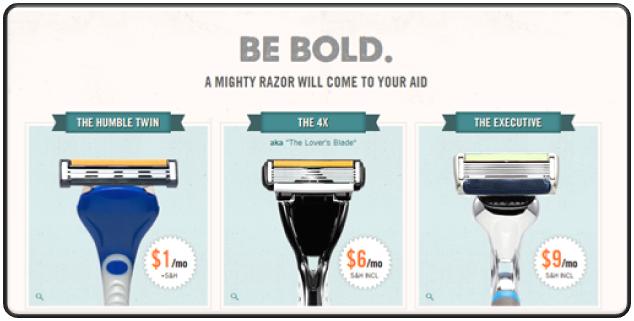Holidays are about tradition, and one of ours is an annual review of some of the most-read blog posts from this past year. So Lori Lewis has dutifully reviewed these posts, and today’s fits the bill. It speaks to the power of video for the radio business. And also the role of radio in helping content go viral. If that sounds a bit counter-intuitive, read on. – FJ
Recently, The New York Times profiled Michael Dubin, the newest hot entrepreneur.
But this story’s a little different. Michael’s Dollar Shave Club is a very simple concept that isn’t really techie. And it’s a runaway hit. OK, the tech part is that his wildly popular viral video has propelled Dollar Shave Club, generating lots of sales and attracting venture dollars, while competing with the big boys like Gillette.
Here’s the humorous video that has generated more than 10,000,000 views:
>EMAIL RECIPIENTS: CLICK HERE TO WATCH DOLLAR SHAVE CLUB VIDEO<
For a low price, Dollar Shave Club will send you new razors right to your home. So, it’s about making the lives of guys easier, alleviating the need to shop for blades.
But here’s the kicker. As I was reading through the interview, Dubin was asked about the media he’s used to get the word out about Dollar Shave Club.
And his response?
Radio.
Yes, you read that right – this new startup has been marketed with radio ads – not national TV spots, Pandora :10s, or web banner ads.
To learn more about the media plan, I contacted Dollar Shave Club and asked Michael to be more specific about his media plan, and of course the big question:
FJ: Why radio?
MD: Impactful creative. Dollar Shave Club has a strong, recognizable brand voice and a simple, straightforward message that we felt could resonate to a radio audience. Whether it was coming directly from the brand or an endorsement, we think it will break through the clutter and help us to acquire new customers. Radio also enables creative flexibility and relatively low production costs, which allowed us to test and learn how the audience was responding. (And) targeting. (Radio) enabled us to find a lot of our guys at once that are engaging with content where we felt our message would have high receptivity – sports and humor. It also was scalable at both a national and local level, which enabled us to test and target specific cities, demographics and content arenas quickly.
FJ: How much of your buys are endorsements from personalities, and can you talk about why this was an avenue you pursued as opposed to recorded spots?
MD: We can’t disclose the percentages between endorsements vs. recorded spots, but we’ve actually found success in both routes. Endorsements gives us a familiar voice the audience trusts, and also puts our message in or surrounding the content – which is when engagement is at its highest. It delivers a large volume of highly qualified consumers to our site. Recorded spots directly deliver the brand’s voice, which allows us to tell brand stories and weave messaging in over time. With lower costs than endorsements, it also enables us to deliver stronger frequency.
Smart radio operators have long known about the power of local personalities to pitch products. Here in Detroit, WRIF’s Meltdown was one of the DJs who has done live reads for Dollar Shave Club. I’m sure many of you have heard these endorsements and recorded spots around the country.
And when asked about the bottom line – did it work and why – Michael told me, “Yes, we’re acquiring new customers profitably.” In this case, men. As he points out, one of radio’s great qualities is its ability to target key customer groups – something that Dollar Shave Club has obviously taken advantage of in its foray into media advertising.
Michael also noted that “radio will continue to be in our future plans,” as long as it continues to attract new business in an efficient way.
This is another of those great stories for radio with an interesting twist – how to power a viral video and launch a hot new company by using the traditional medium of radio, as well as the time-honored format of live personality reads. When we take a deep dive into the findings of Techsurvey9 in less than two weeks, we’ll look at the reasons why consumers continue to listen to radio. As was the case in last year’s study, those “emotional triggers” continue to be important to listeners – and advertisers can tap into that.
It’s about a success story for Dollar Shave Club and web video – a novel concept with a humorous side that proves that new businesses and great concepts can come out of nowhere.
And it’s also an important success story for radio’s ROI.
A simple concept, an edgy video, and radio.
- For Radio, Will It Be Christmas In April (And Hopefully, May)? - April 21, 2025
- Media And Technology In 2025: Believe It Or Not! - April 18, 2025
- In Radio, You Just Never Know - April 17, 2025





Leave a Reply